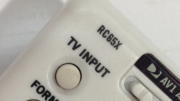You hear the term “broadband” a lot and it’s getting harder and harder to really define it. It doesn’t hurt that people use it as a throwaway term meaning “High Speed Internet.” The two things are not the same. It can be confusing so let’s jump in and try to figure it out.
First of all, here’s what broadband definitely isn’t.
We can say for sure what the opposite of broadband is: it’s narrowband. Narrowband is a term that refers to very targeted frequencies over the air or through a wire. AM and FM radio are excellent examples of narrowband. Each radio station uses a very small amount of the total frequency range and you get a lot of different stations in the same area. That’s the purpose of narrowband broadcasting, to fit a lot of content sources from a lot of different places into one cable or one chunk of broadcast spectrum.
Broadband is…
Technically the term “broadband” just refers to a signal that takes up a lot of space either on a wire or wirelessly. It is generally used to indicate that the signal would overlap some other sort of signal or can be used for multiple types of signals.
For example, a broadband amplifier for RG6 cable can handle broadcast TV signals as well as satellite frequencies. That’s what makes it “broad.” If it were narrowband it would probably only amplify one channel of broadcast TV (for example.)
However, the word “broadband” has a specific definition when it comes to the FCC, the agency that regulates the internet here in the US. They recently updated that definition. Broadband service, according to them, means 100 megabits/sec down and 20 megabits/sec up, or faster. Originally, “broadband’ used to be defined as anything above 3 megabits/sec up, when that seemed like high speed. Instead of creating a new term like “insaneband” or “superultrauberstretchyband,” the FCC just redefined “broadband” to mean something a little more like fast internet as we know it today.
It’s worth noting that high speed internet has nothing to do with bandwidth anymore, not in the same sense that it was initially used. But then, there’s the government for you.
The term “broadband” came to mean “high speed internet” because of DSL and other 2000s technologies that used frequencies on telephone cables that were otherwised unused. Rather than the narrowband transmissions of voice calls, the internet signal going through those cables was considered broadband. The term stuck and even though it’s not terribly applicable anymore now that everyone has fiber, it’s still out there. Think of it as another term like “roll down the windows” or “dial the phone” that doesn’t make sense unless you look at the history.
And then there is wideband.
You don’t hear the term wideband much anymore. Wideband was the original term used for “not narrowband,” but it was more constricting. For example, something that covered both AM and FM (radio), or VHF and UHF (television) would be considered wideband. About the only time this term is still used is with splitters for cables.
Wideband, for a very short time, was also used to describe internet speeds up to 2Mbps, back in the days when that actually seemed fast. The rationale was the same originally used for the term “broadband,” that the internet signal took up a greater range of frequencies than voice calls. However, wideband was never truly high speed and really before the term gained true currency, people stopped using it.
Words mean things… or…
So there you have the confusing and ultimately conflicting definitions of the term “broadband.” If you’re using it for traditional broadcasting of any type, it actually does mean, well, “broadband.” If you’re using it to refer to internet, it just means fast, and it’s not really clear what fast is supposed to mean. Go figure!
Should you worry if you don’t have “broadband?”
With the new FCC definition, a lot of folks will find that they no longer have “broadband service.” The real question folks should be asking is, am I happy with what I have? If you are streaming and surfing without any problem, that’s great. But, you might not be super happy. You might have to wait for things to load, or things might get congested if you have more than just one or two people in the house.
If your internet service isn’t meeting your needs, do something about it! Call the folks at Signal Connect. We work with internet companies all over the country. We have worked out special deals which can help you save money and get the speed you want. Interested? Call the experts at 888-233-7563. We’re here during East Coast business hours. If it’s after hours, fill out the form below and we’ll get right back to you.





